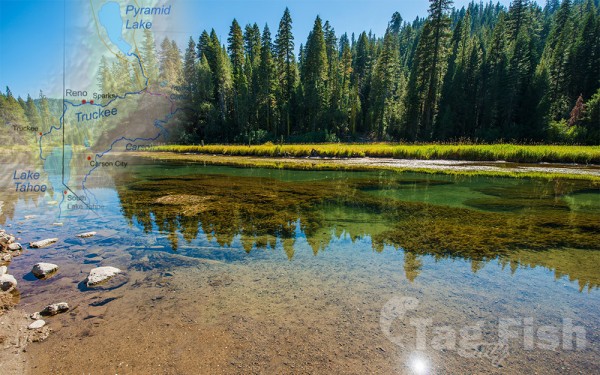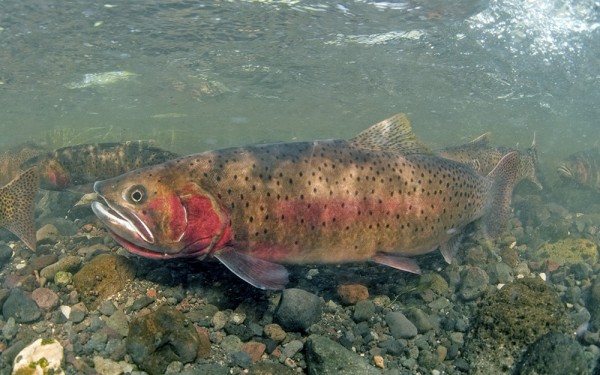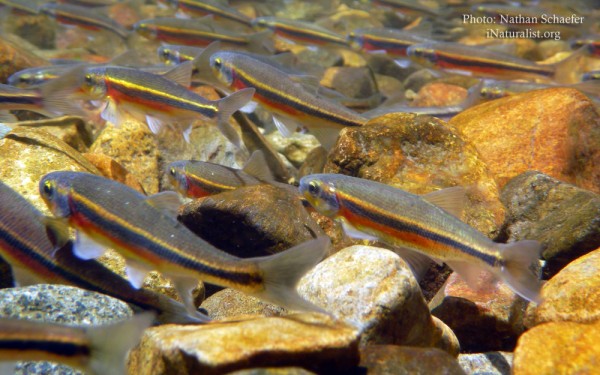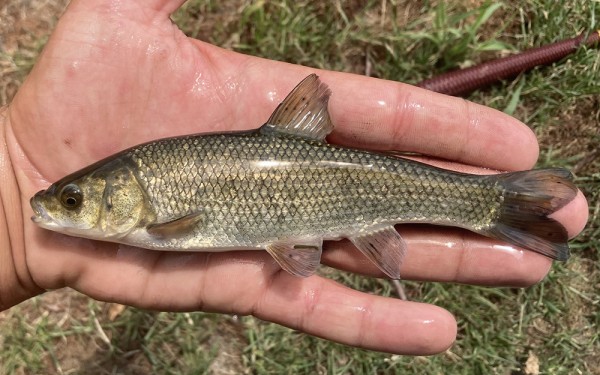Pyramid Lake
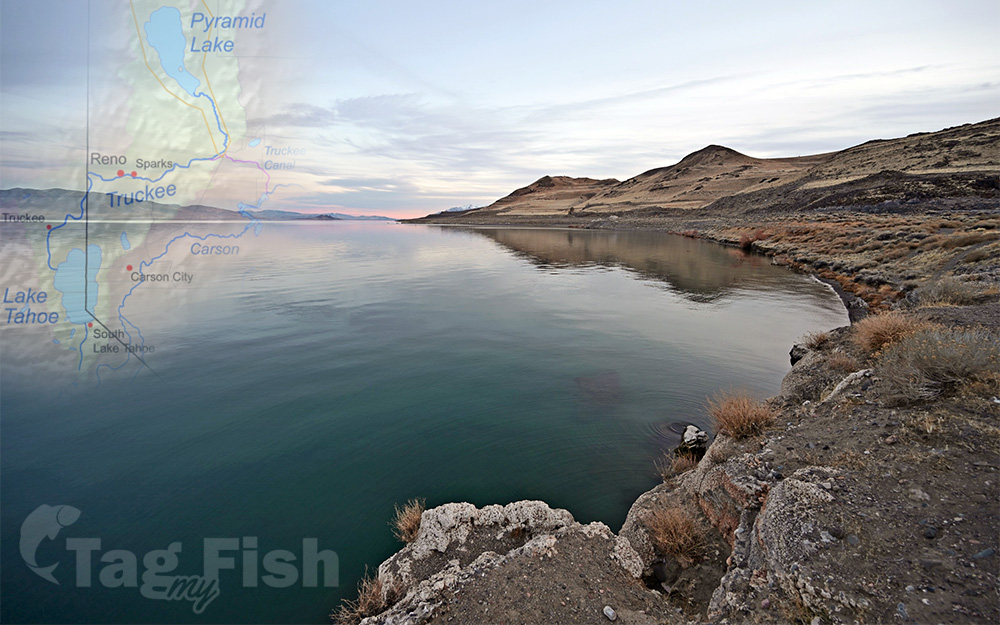
Largest tributaries
Salmoniformes - Salmons and Trouts
Cypriniformes - Carps
Salmoniformes - Salmons and Trouts
Cypriniformes - Carps
Salmoniformes - Salmons and Trouts
Cypriniformes - Carps
Pyramid Lake is the geographic sink of the basin of the Truckee River, 40 mi (64 km) northeast of Reno, Nevada, United States.
Pyramid Lake is the biggest remnant of ancient Lake Lahontan, the colossal inland sea that once covered most of Nevada. It is approximately 15 miles long and 11 miles wide, covering 112,000 acres entirely enclosed within the Pyramid Lake Paiute Tribe Reservation.
Pyramid Lake is fed by the Truckee River, which is mostly the outflow from Lake Tahoe. The Truckee River enters Pyramid Lake at its southern end.
Pyramid Lake is an endorheic lake. It has no outlet, with water left only by evaporation, or sub-surface seepage. The lake has about 10% of the area of the Great Salt Lake, but it has about 25% more volume. The salinity is approximately 1/6 that of sea water. Although clear Lake Tahoe forms the headwaters that drain to Pyramid Lake, the Truckee River delivers more turbid waters to Pyramid Lake after traversing the steep Sierra terrain and collecting moderately high silt-loaded surface runoff.
The north and east sides of the lake have been restricted to the public and non-Tribal members for nearly a decade. In 2011, the Tribal Nation made the decision to close these areas due to the desecration of sacred sites. When visiting, it is recommended to take note of the Tribal protocols and restricted areas.
Fish
Major fish species include the Cui-ui lakesucker, which is endemic to Pyramid Lake, the Tui chub and Lahontan cutthroat trout (the world record cutthroat trout was caught in Pyramid Lake). The former is endangered, and the latter is threatened. Both species were critical to the Paiute people in pre-contact times. The Lahontan cutthroat was called Hoopagaih by the Paiute people. As they are both obligate freshwater spawners, they rely on sufficient inflow to allow them to run up the Truckee River to spawn, otherwise their eggs will not hatch.
Diversion of the Truckee for irrigation at Derby Dam beginning in 1905 reduced inflow and the lake level to such an extent that stream flow is rarely sufficient for spawning. The Truckee Canal diverts water used to irrigate croplands in Fallon. The dam lacks fish ladders, which prevents upstream spawning. By 1939 the Lahontan cutthroat trout (the salmon-trout as described by Frémont) became extinct in Pyramid Lake and its tributaries. They were replaced with hatchery trout from outside the watershed.
However, in 1979 a remnant population of the original Pyramid Lake cutthroat trout was discovered in a small brook on Pilot Peak, on the Nevada/Utah border, by Dr. Robert Behnke of Colorado State University while he was looking for the Bonneville cutthroat trout, another subspecies of the cutthroat trout. The fish were tiny and in poor condition, but Behnke identified the fingerlings as the missing Pyramid Lake variety.
Subsequent DNA testing of a museum specimen has shown his identification to be correct. The fish had been dumped in the creek in the early 20th century. A brood stock was raised at the U.S. Fish and Wildlife Services Lahontan National Fish Hatchery in Gardnerville, Nevada, and a successful reintroduction effort was mounted by the USFWS and the Pyramid Lake Paiute Tribe. As of 2017, 24 pound Pyramid Lake Lahontan cutthroat trout are again being caught from the Lakes waters.
The fish are doing very well, according to the USFWS project head Lisa Heki. The fish have also been placed in Californias Fallen Leaf Lake, upstream of Pyramid Lake, and elsewhere. Fish populations are now sustained by several tribally-run fish hatcheries and state and federal agencies. The Pyramid Lake Lahontan cutthroat trout is one of the largest inland trout species in the world.
